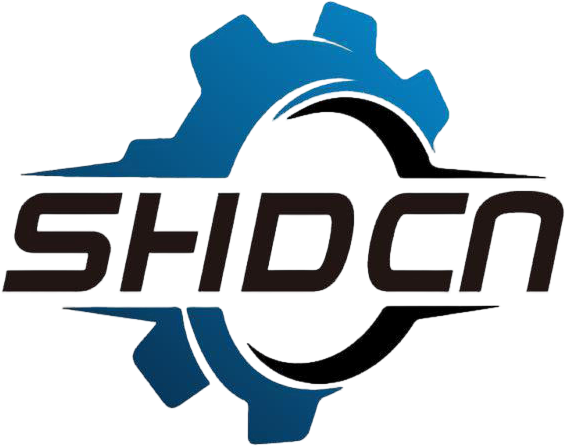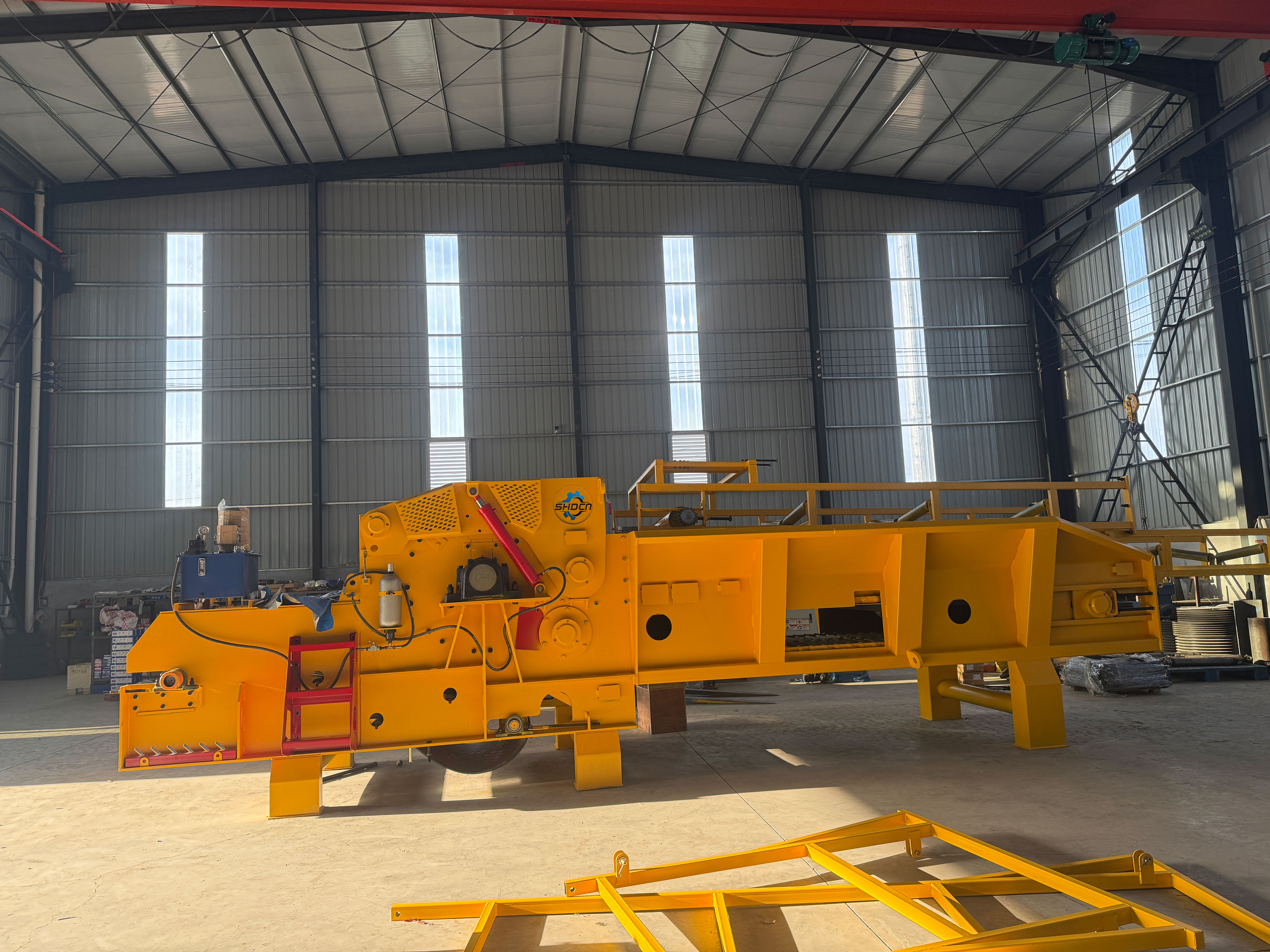신규 공장 설립 시 초기 구매 및 설치 비용 예산 계획
작년 Forestry Equipment Journal의 데이터에 따르면, 새로운 목재 가공 시설을 구축하는 대부분의 산업 구매자들은 설치 비용 산정에서 벗어나는 경향이 있으며, 종종 실제 비용을 약 18%에서 25% 정도 과소평가합니다. 실제로 목재 분쇄기 자체의 비용은 시작일 뿐입니다. 일반적으로 8천 달러에서 1만 5천 달러가 소요되는 현장 준비 작업도 잊어서는 안 됩니다. 또한 전기 설비 업그레이드 비용도 발생하며, 삼상 전원 연결만으로도 5천 달러를 초과하는 경우가 있습니다. 안전 규정 준수를 위한 서류 작업 역시 간과해서는 안 됩니다. 업계 전문가들은 장비 예산의 약 35%에서 40% 정도를 이러한 추가 비용을 충당하기 위해 별도로 확보할 것을 권장합니다. 이를 통해 운영이 본격화되었을 때 모든 요소들이 원활하게 조화를 이룰 수 있습니다.
장기적 절감 효과 vs. 초기 비용: 유지보수, 연료비, 가동 중단 시간 평가
2024년 칩핑 비용 분석에 따르면, 유지보수는 5년간 총 소유 비용의 14%를 차지합니다. 엔진 유형을 비교해 보면:
| 엔진 타입 | 톤당 평균 소비량 | 연간 비용 (1만 톤 기준) |
|---|---|---|
| 디젤 | 0.8–1.2 갤런 | $24,000–$36,000 |
| 전기 | 8–12 kWh | $9,600–$14,400 |
운영 중단은 평균적으로 시간당 생산성 손실로 인해 380달러의 비용이 발생합니다(Biomass Processing Quarterly). 신뢰성을 고려해 설계된 모델은 초기 투자 비용이 더 높더라도 장기적으로 고장과 유지보수 필요성이 줄어들어 22% 더 비용 효율적임이 입증되었습니다.
합리적인 가격에 신뢰성 높은 우드 치퍼 모델: 산업 기준 및 구매자 인사이트
$25,000–$45,000 범위는 하루 50~100톤을 처리하는 공장에 최적의 가치를 제공합니다. 장기 성능을 향상시키는 주요 특징은 다음과 같습니다:
- 표준 강철보다 2.5배 이상 오래 지속되는 경질 강철 절삭 실린더
- 내부에서 수리 작업의 90%를 가능하게 하는 모듈식 구성 요소 설계
- 직결 구동 대비 토크 일관성이 8~12% 더 우수한 벨트 구동 시스템
이 모델들은 초기 비용 부담을 줄이면서도 내구성을 확보하여 수명 주기 비용을 절감하고 확장 가능한 운영을 지원합니다.
저가 기계의 숨겨진 비용: 유지보수 리스크와 운영상의 타협
산업계 유지관리 기록에 따르면, 18,000달러 미만의 입문형 칩퍼는 블레이드 교체 빈도가 63% 더 높고 공급 속도가 40% 느립니다. 저예산 모델을 사용하는 시설에서는 다음 사항들이 보고되었습니다.
- 매월 추가로 19시간의 가동 중단 시간 발생
- 재료 배출 불균일로 인한 부상률 27% 증가
- 고급 기종 대비 3.1년 짧은 운용 수명
5년 차까지 누적 수리 비용이 저가 기계의 원래 구매 가격 대비 최대 92%에 달하게 되어 초기 투자 비용은 낮지만 장기적으로 훨씬 더 큰 비용이 발생합니다.
디스크형 vs 드럼형 칩퍼: 산업 효율성을 위한 적절한 유형 선택
디자인 및 성능 차이: 디스크형 칩퍼와 드럼형 칩퍼
디스크 칩퍼는 회전하는 디스크에 부착된 블레이드를 수직으로 회전시키는 방식으로 작동합니다. 이러한 기계들은 일반적으로 분당 1,200에서 1,500회 전까지 작동하며, 펄프 제조에 필요한 균일한 칩을 만드는 데 도움이 됩니다. 반면 드럼 칩퍼는 큰 수평 실린더를 사용합니다. 이들은 분당 약 400~700회전으로 더 느리게 회전하지만 훨씬 더 강력한 동력을 발생시킵니다. 이 추가 토크 덕분에 드럼 칩퍼는 두께 약 14인치의 원목도 처리할 수 있는데, 대부분의 디스크 칩퍼는 이 크기의 절반 정도까지만 처리 가능하므로 작년 산업 보고서에 따르면 이보다 큰 나무는 다루기 어렵습니다. 균일한 칩 생산 측면에서는 확실히 디스크 모델이 우세하지만, 가지나 형태가 불규칙한 목재 조각을 처리하는 데는 그다지 효과적이지 않습니다. 바로 이런 상황에서 드럼 칩퍼가 진가를 발휘합니다.
대량 작업 시 에너지 효율 및 전력 소비
비정지로 운행할 경우, 드럼형 칩퍼에 비해 디스크형 칩퍼는 톤당 약 19% 적은 연료를 소비하며, 시간당 약 3.2갤런을 소모하여 드럼형의 3.8갤런보다 낮은 수치를 기록합니다. 그 이유는 직접 구동 방식의 변속장치와 에너지 낭비를 줄여주는 지능적인 공기역학적 배출 시스템을 갖추고 있기 때문입니다. 물론 드럼형 칩퍼도 불균일한 재료 하중을 처리할 때 여전히 우수한 성능을 발휘하므로, 다양한 종류의 폐자재를 함께 분쇄해야 하는 현장에서는 드럼형이 더 적합할 수 있습니다. 또한 전기 동력을 고려할 경우, 동일한 작업량을 처리하기 위해 디스크형 모델은 드럼형 대비 약 15~20% 적은 킬로와트가 필요하므로 장기적으로 전력 요금 절감 효과가 크게 나타날 수 있습니다.
업계 동향: 대규모 공장에서 디스크형 칩퍼에 대한 선호도 증가
2024년에 실시된 87개 바이오매스 시설에 대한 최근 조사에 따르면, 약 3분의 2가 주요 가공 작업에 원반형 칩퍼(disc chippers)를 사용하도록 전환했다. 이러한 전환은 자동화 시스템과의 호환성 및 일반적으로 대체 제품보다 유지보수가 적게 든다는 점을 고려할 때 타당하다. 동일한 산업 분석 보고서는 직경 10인치 이상의 원목을 처리하는 제재소에서는 여전히 전통적인 드럼 칩퍼(drum chippers)가 널리 사용되고 있음을 지적하고 있다. 반면 대부분의 펄프 작업은 칩 크기를 매우 좁은 범위 내(일반적으로 ±약 2밀리미터 이내)로 생산해야 하기 때문에 디스크형 기계에 의존하고 있다. 또한 새로운 하이브리드 모델들이 시장에 등장하기 시작했는데, 이들은 디스크 기술의 정확성 장점과 더 까다로운 작업에 필요한 견고함을 결합하여 산업 요구 사항이 시간이 지남에 따라 어떻게 계속 변화하고 있는지를 보여주고 있다.
엔진 출력 및 공급 시스템: 성능과 자동화 극대화
디젤 엔진과 전기 엔진: 지속적인 공장 가동에 적합성
디젤 엔진은 이동식 장비에 선호되며, 산업 현장 운영자의 68%는 중형 작업을 위한 높은 토크 출력을 그 이유로 꼽았다(2023 산업용 동력 설문조사). 고정 설치의 경우 전기 모델이 운영 비용을 18~22% 절감할 수 있으며, 특히 이미 3상 전력 인프라를 갖춘 시설에서 더 유리하다.
재료 종류 및 공급 속도에 따른 마력 및 kW 요구 사양
유사한 공급 속도에서 낙엽수 가공은 침엽수보다 25~35% 더 많은 마력이 필요하다. 일반적으로 150마력 디젤 엔진은 혼합 목재 8~10톤/시간을 처리할 수 있으며, 전기 모델은 110~130kW에서 유사한 출력을 달성한다.
| 재료 유형 | 권장 동력 | 생산 능력 |
|---|---|---|
| 침엽수(소나무/전나무) | 85–100 HP | 6–8 톤/시간 |
| 낙엽수(오크/단풍나무) | 125–150 HP | 4–6톤/시간 |
| 혼합된 잔해 폐기물 | 65–80마력 | 5–7톤/시간 |
데이터 포인트: 처리된 목재 1톤당 평균 에너지 소비량
최신 전기 칩퍼는 처리된 목재 1톤당 11–14kWh를 소비하며, 디젤 모델은 동일한 출력에 대해 3.8–4.2갤런을 사용한다. 이러한 수치는 수분 함량과 공급 물질의 일관성에 따라 ±15% 정도 변동될 수 있다.
공급 메커니즘: 중력 공급 대 유압 공급 및 인력 영향
중력 공급 시스템은 초기 비용을 22% 절감하지만 재료 정렬을 위해 30% 더 많은 수작업 인력을 필요로 한다. 유압 공급 롤러는 자동화 환경에서 일정한 처리량을 지원하여 교대당 2.1명의 상시 근무 인력을 줄일 수 있다.
자동 공급 시스템을 통한 다운타임 감소 및 일관성 향상
부하 감지 기술이 적용된 자동 공급 시스템은 연속 운전에서 92–96%의 가동률을 달성한다. 엔진 부하와 재료 밀도에 따라 공급 속도를 조절함으로써 고용량 작업 환경에서 예기치 못한 다운타임을 40% 줄일 수 있다.
절단 시스템 및 블레이드 내구성: 장기적 신뢰성 확보
산업용 목재 분쇄기는 생산성을 유지하기 위해 견고한 절단 시스템에 의존한다. 블레이드의 내구성과 기계 설계는 운영 신뢰성과 비용 관리에 상당한 영향을 미친다.
플라이휠, 디스크, 드럼 절단 방식: 성능과 적합성
플라이휠 시스템은 대경목재(직경 30cm 이상)를 효율적으로 처리하지만 디스크 기반 모델보다 15~20% 더 많은 에너지를 소비합니다. 드럼 칩퍼는 잎이 무성한 재료의 대량 가공에 탁월하며, 디스크 구성은 경재용으로 균일한 칩 품질을 제공합니다. 42개 공장을 대상으로 한 2025년 분석 결과, 혼합 재료 작업에서 디스크 기반 시스템은 블레이드 교체 횟수를 27% 줄인 것으로 나타났습니다.
고속 처리 환경에서의 블레이드 소재 및 교체 주기
고탄소강 블레이드는 800~1,200시간 가동 수명을 가지며, 초경합금 팁이 적용된 변형 제품은 초기 비용은 더 높지만 수명이 2.3배 이상 길다. 티타늄 질화물(TiN)과 같은 코팅은 자동 피딩 시스템을 사용한 시험에서 마찰로 인한 마모를 18% 감소시키는 것으로 입증되었다. 하루 50톤 이상을 처리하는 공장은 효율을 3% 이내로 유지하기 위해 분기별 블레이드 교체를 계획해야 한다.
경질 강철 블레이드의 내구성과 현장 정비 용이성의 균형
62~65 HRC 경도의 블레이드는 수명을 연장하지만 날을 갈기 어려워진다. 운영자들은 점점 모듈식 설계를 선호하게 되었으며, 2024년 조사에 따르면 퀵체인지 블레이드 시스템을 사용하는 공장은 정비 중단 시간이 41% 적었다. 현장에서 교체 가능한 절삭날은 이제 신규 산업용 치퍼 구매의 68%를 차지하며, 내구성과 운용 유연성을 결합하고 있다.
주요 정비 요소:
- 절삭날에 대한 일일 시각 점검
- 가동 시간 기준 200시간마다 윤활 시스템 점검
- 매월 장착 부품의 토크 확인
- 베어링 정렬을 위한 분기별 열화상 이미징
이러한 능동적 접근 방식을 통해 공장은 칩 품질을 유지하고 다양한 원료에 대해 계획되지 않은 가동 중단을 0.5% 미만으로 줄일 수 있습니다.
자주 묻는 질문 섹션
목재 분쇄기 장비 설치 비용은 얼마입니까?
목재 분쇄기 장비의 설치 비용은 약 18~25% 정도 낮게 책정되는 경향이 있으며, 일반적으로 부지 준비, 전기 설비 업그레이드 및 안전 규정 준수 비용을 포함하여 총 8천 달러에서 1만 5천 달러 사이입니다.
운영 중 가동 중단 비용이 생산성에 어떤 영향을 미칩니까?
운영 중 가동 중단으로 인한 평균 손실 비용은 시간당 380달러로, 초기 투자 비용은 더 높을 수 있지만 장기적으로 더 비용 효율적인 신뢰성 높은 모델에 투자하는 것이 중요한 이유를 보여줍니다.
왜 대규모 공장에서는 디스크 분쇄기를 선호합니까?
디스크 칩퍼는 자동화 시스템과의 호환성과 유지보수가 용이하여 펄프 생산을 중심으로 하고 일정한 칩 크기를 요구하는 대규모 공장에 더 적합합니다.
엔진 유형은 운영 비용에 어떤 영향을 미칩니까?
디젤 엔진은 중작업용으로 높은 토크를 제공하는 반면, 전기 모델은 기존 3상 전력 인프라를 갖춘 시설에서 특히 낮은 운전 비용을 제공합니다.
목재 칩퍼의 블레이드 내구성에 영향을 주는 요인은 무엇입니까?
블레이드 내구성은 고탄소강 또는 탄화물 코팅 블레이드와 같은 재료 종류, 질화티타늄 코팅, 정기 점검, 윤활 및 하드웨어 토크 확인과 같은 유지보수 방법에 의해 영향을 받습니다.

